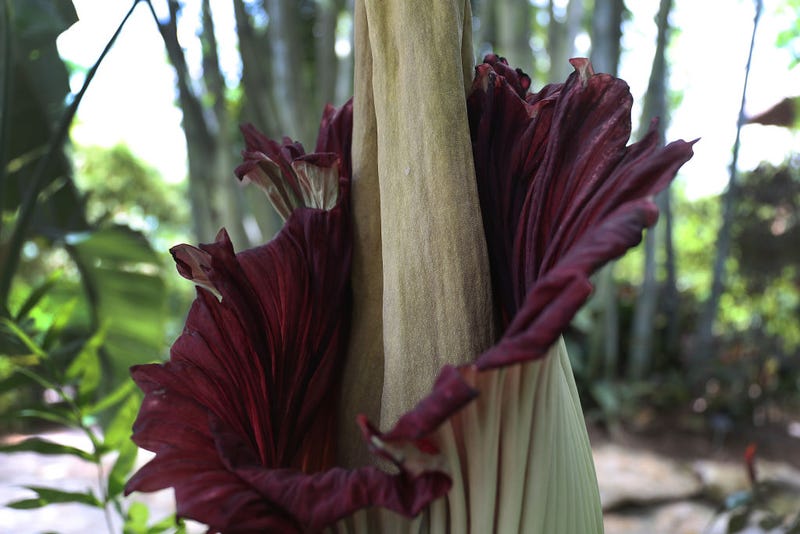
SAN MARINO (CNS) - The famous corpse flower was in full bloom today at The Huntington Library, Art Collections and Botanical Gardens, although its timing was not the best, coming on a day when the gardens were closed to the public.
"Behold Stankosaurus Rex, a majestic and smelly beast. Our 12th Amorphophallus titanum (#CorpseFlower) peaked in its bloom early this morning ... Before it closes up, our botanical staff will be hand-pollinating the plant. Stay tuned!" the Huntington tweeted Tuesday morning.
The flower started blooming on Monday night, allowing some visitors the chance to view it until 9 p.m., but tickets quickly sold out.
The museum and gardens will reopen at 10 a.m. Wednesday, when guests can get a view -- and a whiff -- of what has been called the world's largest flower -- although it is technically an "inflorescence," or a cluster of flowers.
The Amorphophallus titanum, also known as a Titan Arum and corpse flower, can reach more than 8 feet in height when it blooms, opening to a diameter of 4 feet. This year's specimen reached 90 inches, breaking the previous local record of 81 inches in 2009.
When in one of its ultra-rare blooms, it gives off an odor akin to rotting flesh, attracting insects that pollinate the flowers deep inside. The blooming plant produces two key gases -- dimethyl disulfide and dimethyl trisulfide -- that also are present in decomposing animals and vegetables, according to Susan Turner-Lowe, The Huntington's vice president for communications & marketing.
What prompts a particular plant to start the blooming process largely remains a mystery, Turner-Lowe said, but the corpse flower tends to bloom during hot weather.
When a corpse flower was first displayed at the Kew Royal Botanic Gardens in the late 19th century, at least one Victorian woman was said to have swooned when she got a whiff of the bloom.
The flower was first displayed in the United States in 1937 at the New York Botanical Garden.
Advance reservations are required to view the flower in person, and can be made through The Huntington.
